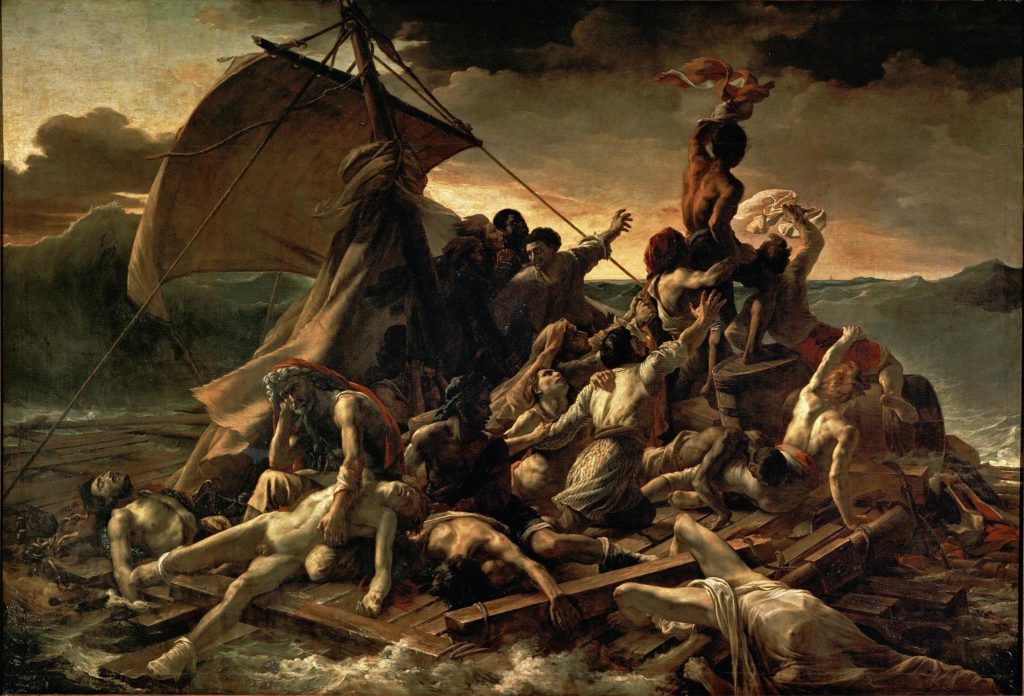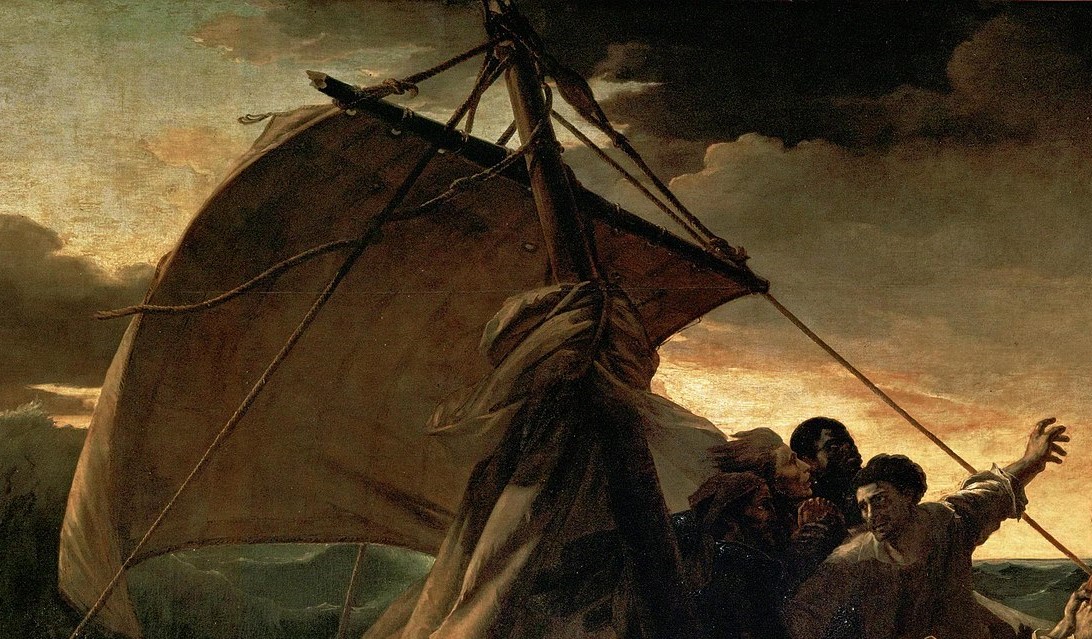The French painter Jean-Louis André Théodore Géricault left this world at the age of 31, but it would be wrong to say he died young.
He witnessed several social epochs – the bourgeois revolution, Napoleon Bonaparte’s dictatorship, and the Bourbon Restoration. People who live in such turbulent times mature very quickly.
Find the Differences
Initially, Géricault adored classical art that demonstrated sublime ideas and beautiful forms. His debut canvas, presented to the public at the Paris Salon of 1812, was quite in line with the academic standards of painting.
The life-sized work depicted a noble hero attacking the enemy. “A terrible horseman, a brilliant captain, lean, weather-beaten, scorched by the sun,” historian Jules Michelet, a contemporary of Géricault, admiringly described his character.

The picture caused genuine delight among the French, reveling in the power of their army. Théodore Géricault was awarded a gold medal.
The Salon of 1812 had not yet closed when disturbing news reached Paris: near Borodino, Napoleon’s army lost about forty thousand people; while crossing the Berezina, about thirty thousand more of his soldiers perished. In fact, the great army of Napoleon ceased to exist.
Géricault’s second big picture seemed to refute the first.

Compare them. Both officers are handsome and athletic; both horses could impress any horse lover. The backgrounds are similar too, with smoke over the battlefield. This is where the resemblance ends.
As for the differences… The main difference is the direction in which the characters are moving. The officer on Géricault’s debut canvas rushes in the direction that is natural for “reading” images (Europeans, who write from left to right, read texts and learn pictures the same way). The wounded cuirassier goes from right to left. Tearful and abashed, the hero is retreating.
Disaster Painting
In 1816, the French were shocked by a tragedy that, at first blush, didn’t seem to be connected with war or politics.
The frigate Medusa was carrying French officials from France to Senegal. The captain, a dodgy fellow who got the position thanks to a bribe and had little understanding of seafaring, ran the ship aground.
When it became clear that the Medusa was doomed, the captain, the governor of Senegal,
and several other dignitaries occupied a small number of lifeboats. Almost a hundred and fifty passengers were forced at gunpoint onto a makeshift raft. The boats were supposed to tow the raft, but they simply cast it adrift.
The raft of the Medusa drifted on the sea for twelve terrible days. Abandoned without the necessary supplies of food, and with nothing to drink except wine, people ended up fighting, killing, and eating one another.
The survivors were eventually picked up by the ship Argus. Later, one of them remembered what they looked like:
Imagine fifteen unfortunate men, almost naked; their bodies and faces disfigured by the scorching beams of the sun; ten of the fifteen were hardly able to move; our limbs were excoriated, our sufferings were deeply imprinted on our features, our eyes were hollow, and almost wild, and our long beards rendered our appearance still more frightful; we were but the shadows of ourselves.
The plot, which would be unacceptable to many artists, engrossed Théodore Géricault.
The artist painted The Raft of Medusa long and hard, trying to achieve an effect of ultimate verisimilitude. Géricault was not satisfied with the work of ordinary sitters; he sketched the sick and dying people in the local hospital.
The canvas he eventually created turned out to be enormous – 491 х 716 cm (193 x 282 in).

What is the scariest thing in this picture? Not the corpses, not the rising wave. The most frightening thing is the eyes of a gray-haired man hugging the body of his murdered son.
These eyes aren’t visible well enough in the reproduction; however, when you stand in front of the original in the Louvre, it’s difficult to look away from them.
Possible rescue (the younger passengers of the raft have spotted a ship on the horizon) offers no consolation to the heartbroken father. Will the ship’s crew see the signal from the raft – does this still make sense? Is there any future for people who treat each other like that? Are there values for which a human being is able to curb the savage in himself?
The historian Michelet, already mentioned above, said about Géricault’s masterpiece, “France itself, our society itself is shown on the Medusa raft.”
Many of Gericault’s contemporaries felt that there were parallels between the tragedy depicted in the painting and their everyday reality. Not many were frank with themselves though.
Exhibited in 1819, The Raft of the Medusa was not a success. It attracted fierce criticism from royalist and academic circles.
The canvas brought him no recognition and no money. Five years later, the artist died in poverty.
His mental health deteriorated in the last years of his life. An outstanding psychiatrist of the time, Étienne-Jean Georget, cured him. Georget specialized in monomania and was the first to characterize some of them. He gave Géricault the idea of portraying picturesque types from his practice: the psychiatrist planned to use the artworks as visual aids for medical students.
The artist painted maniacs, who were concentrated on an absorbing passion and disfigured by it. In particular, he portrayed a madman suffering from delusions of military command:

His unshaven cheeks and sunken mouth unpleasantly contrast his imperious gaze. The man thinks he is omnipotent; actually, he is miserable.
Perhaps this madman imagines himself as a new Napoleon.
- История искусств – cтили, направления и течения [The History of Art – Styles and Movements] Алина Аксенова, Бомбора, Москва, 2021
- Краткая история искусств – XIX век [The Short Art History – 19th Century] – Нина Дмитриева, Пальмира, Москва/Санкт-Петербург, 2020
- Narrative of a Voyage to Senegal in 1816 – Jean Baptiste Henry Savigny
- Art – A Visual History – Robert Cumming, DK, UK, 2020
- Art History – John Finlay, Arcturus, 2020
- Артхив – Бомбора, Москва, 2021


Thank you, Natalia Usanova, I find your illustrated articles both thought provoking and enriching.
Please give us more!
Thanks a lot for your response, Denise!